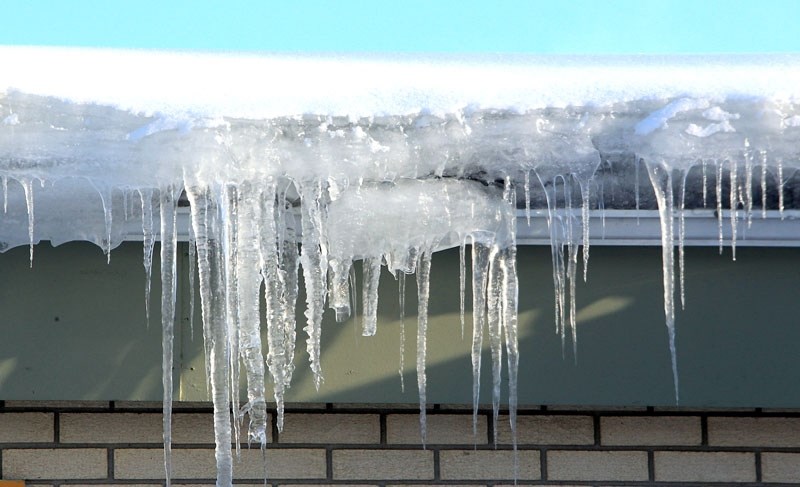For most people, seeing the sun glistening in the ice hanging from their roof is a magical moment of winter.
The problem is, icicles are not just pretty to look at – they can be costly.
Bob Jensen, estimator for Jensen Roofing Ltd. in St. Albert, said icicles are a byproduct of ice dams building up along the overhang of the roof.
The overhang (or eave) is the part of the roof that extends beyond the exterior wall.
The dam forms when the roof warms up enough to melt the snow on it.
“When the water hits the overhang, it’s cold from the top and the bottom and then it freezes and creates an ice dam,” he said.
“And when the ice gets thick enough it can back the water behind the shingles.”
Jensen said the buildup is a result of poor ventilation, a lack of insulation or too much heat in the attic due to a disconnected pipe.
It can lead to moisture in the walls and the roof, and, worst of all, leaks. The rest of the water flows over and creates the icicles.
Jensen said it’s mostly older homes, built between the 1940s and 1970s, that lack proper insulation and face trouble with the snow on their roofs.
He advises that people add insulation to their drywall on the inside and build it up that way. Or they can tear the roof off and rebuild it with better ventilation, but that’s more costly than efficient, he said.
“If it’s not a very steep roof, you can buy electrical plug-in heat lines and they swing back and forth and up and down on the shingles,” he said.
“And every time you have an ice build-up you can plug them in and melt the ice.”
He added the lines are easy to install, even when ice has already formed on the roof. In that case, people can just lay them on top.
Roche LeBlanc with Edmonton-based Juste Pour Toi Ltd., a rooftop snow removal company, said people should always try to remove snow from their roof before the ice builds up.
He advises against banging on the ice with an axe or a shovel, as this can damage the eaves or shingles.
“If there’s already a leak you can try to break some of the ice to leave a place for the water to run down and back from the eavestrough,” he said.
“And if there’s a problem with a lot of ice building up, you have to call an insulation company and remove the snow to not have more damage.”
LeBlanc said about 10 to 15 per cent of St. Albert call him with ice damming problems each winter.
Another way to prevent ice from building up, he said, was to check that vents under the roof are not blocked and allow for proper air circulation.
He added this was also important to keep carbon monoxide from building up in the home and affecting the health of occupants.
Jensen said when making repairs before or after winter, people should be wary of paying the cheapest price when fixing broken vents.
“People are supposed to put cardboard insulation stops in the vents that let the air flow through but not the insulation,” he said.
“But some hire cheaper companies that don’t install the cardboard stops and then the insulation covers up the soffit area and the heat can’t get out from under the roof and causes more ice to come down.”
He added that people should be cautious when taking the ice off the roof on their own.
While they may be able to walk on the thick build-up, they should use a ladder if possible or call a contractor.
And while salt looks like a smart idea, he said it’s bad for the grass once the ice melts and it causes rust.




